
Converging lens optics Britannica
Lesson 3 focused on the reflection of light by concave mirrors and on the formation of images by this reflected light. In that lesson, it was shown that concave mirrors can produce both real and virtual images, depending upon the object location.In Lesson 4, we will follow a similar pattern of inquiry for convex mirrors: investigating how convex mirrors reflect light and produce images.
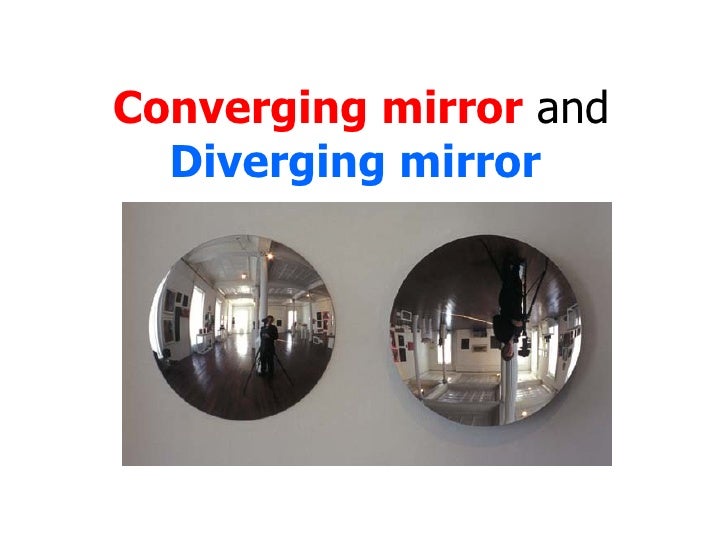
Converging Mirror And Diverging Mirror
A ray approaching a concave converging mirror parallel to its axis is reflected through the focal point F of the mirror on the same side. (See rays 1 and 3 in Figure 2(b).) A ray approaching a convex diverging mirror parallel to its axis is reflected so that it seems to come from the focal point F behind the mirror. (See rays 1 and 3 in Figure 3.)
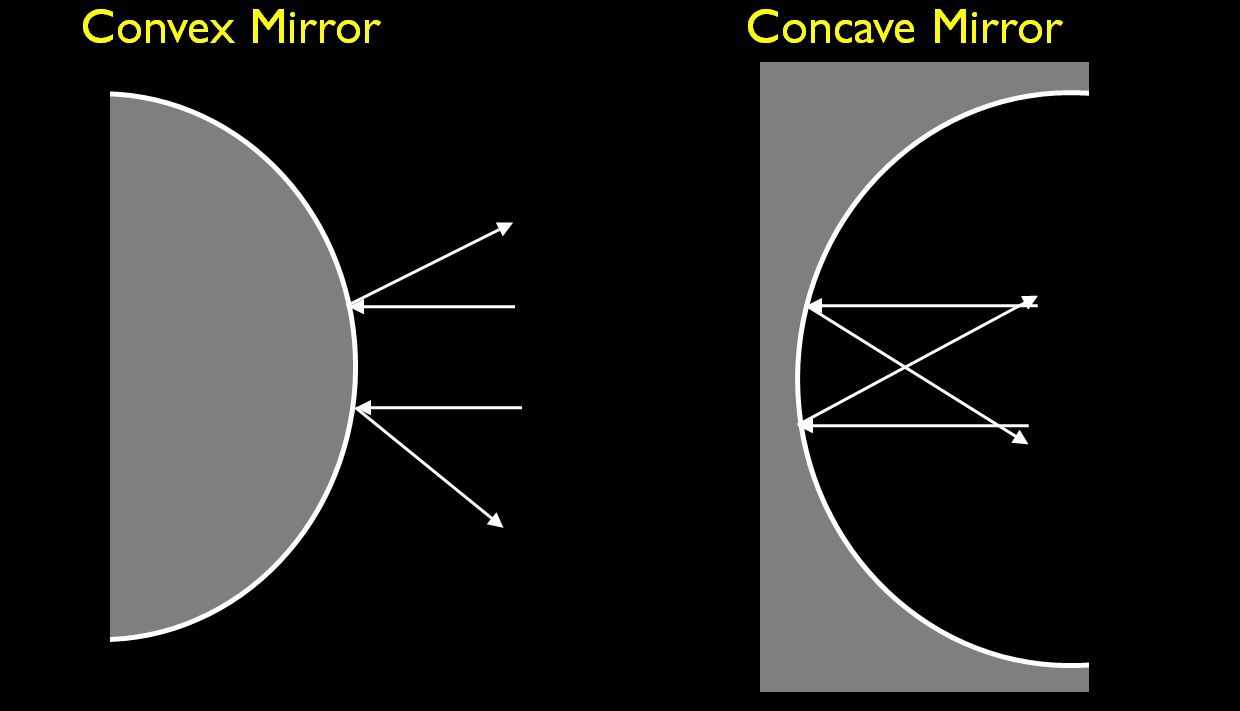
Describe Two Common Uses of a Diverging Mirror
A concave mirror is a curved mirror that forms a part of a sphere and designed in such a way that rays of light falling on its shiny surface converge upon reflection. Hence, it is also called a converging mirror. A concave mirror produces both real and virtual images, which can be upright or inverted.

Concave mirror is a Converging mirror Why concave mirror is a
Principal Ray 1: a ray approaching a concave converging mirror parallel to its axis is reflected through the focal point F of the mirror on the same side. (See rays 1 and 3 in Figure \(\PageIndex{2}\)(b).); a ray approaching a convex diverging mirror parallel to its axis is reflected so that it seems to come from the focal point F behind the.

Concave lens — Science Learning Hub
A ray approaching a concave converging mirror parallel to its axis is reflected through the focal point F of the mirror on the same side. (See rays 1 and 3 in Figure 2(b).) A ray approaching a convex diverging mirror parallel to its axis is reflected so that it seems to come from the focal point F behind the mirror. (See rays 1 and 3 in Figure 3.)
Explain the rules of concave and convex mirror
Concave (converging) mirror b. Convex (diverging) mirror F F. Brooklyn College 2 For spherical mirrors, relation between object distance (d o), image distance (d i) and focal length (f) is given by mirror equation d o d i f 1 1 1 (3) where d o, d i and f are measured from the mirror on the principal axis..
Explain the rules of concave and convex mirror
thinner in the center. there are focal points on both sides of each lens. focal length f on both sides is the same. Ray diagram for converging lens. Ray 1 is parallel to the axis and refracts through F. Ray 2 passes through F' before refracting parallel to the axis. Ray 3 passes straight through the center of the lens.
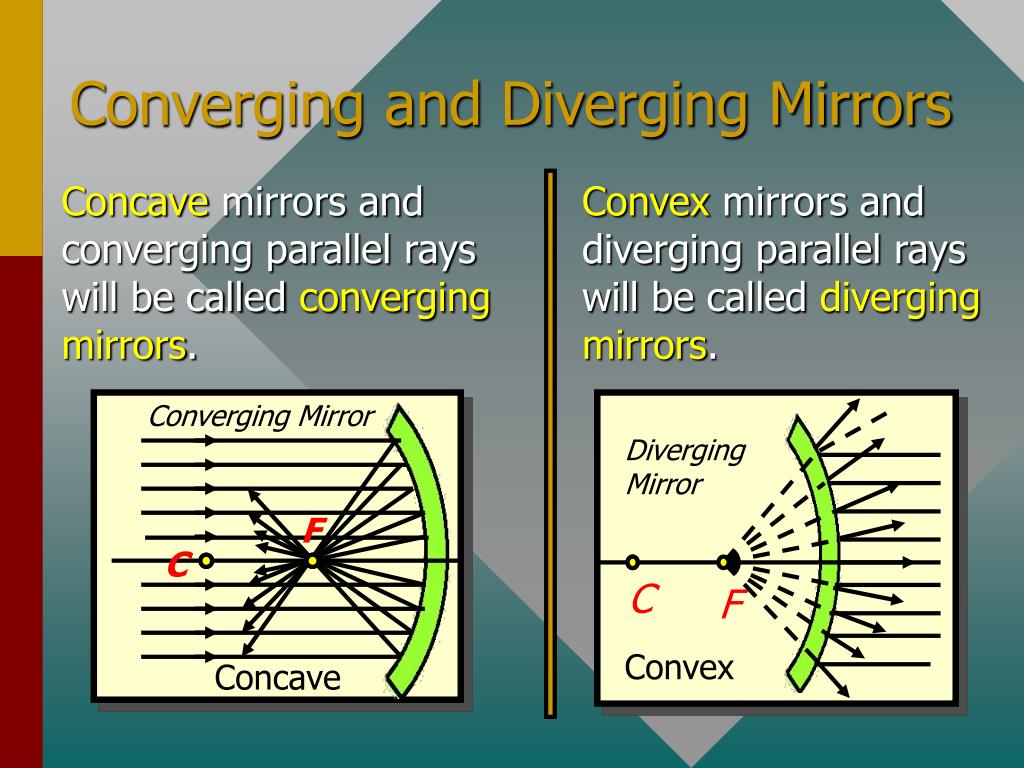
PPT Chapter 34B Reflection and Mirrors II (Analytical) PowerPoint
Definition of Concave Mirror. Concave mirrors are converging mirrors. The parallel incident rays fall on the mirror's surface and the rays reflect and meet at a certain point known as the focal point.. Answer 1: Convex mirrors are diverging mirrors whereas concave mirrors are converging mirrors. Question 2: Which mirror is used in.
Why is a concave mirror called converging mirror and convex mirror
The focal length f of a concave mirror is positive, since it is a converging mirror. Figure 25.39 (a) Parallel rays reflected from a large spherical mirror do not all cross at a common point. (b) If a spherical mirror is small compared with its radius of curvature, parallel rays are focused to a common point.
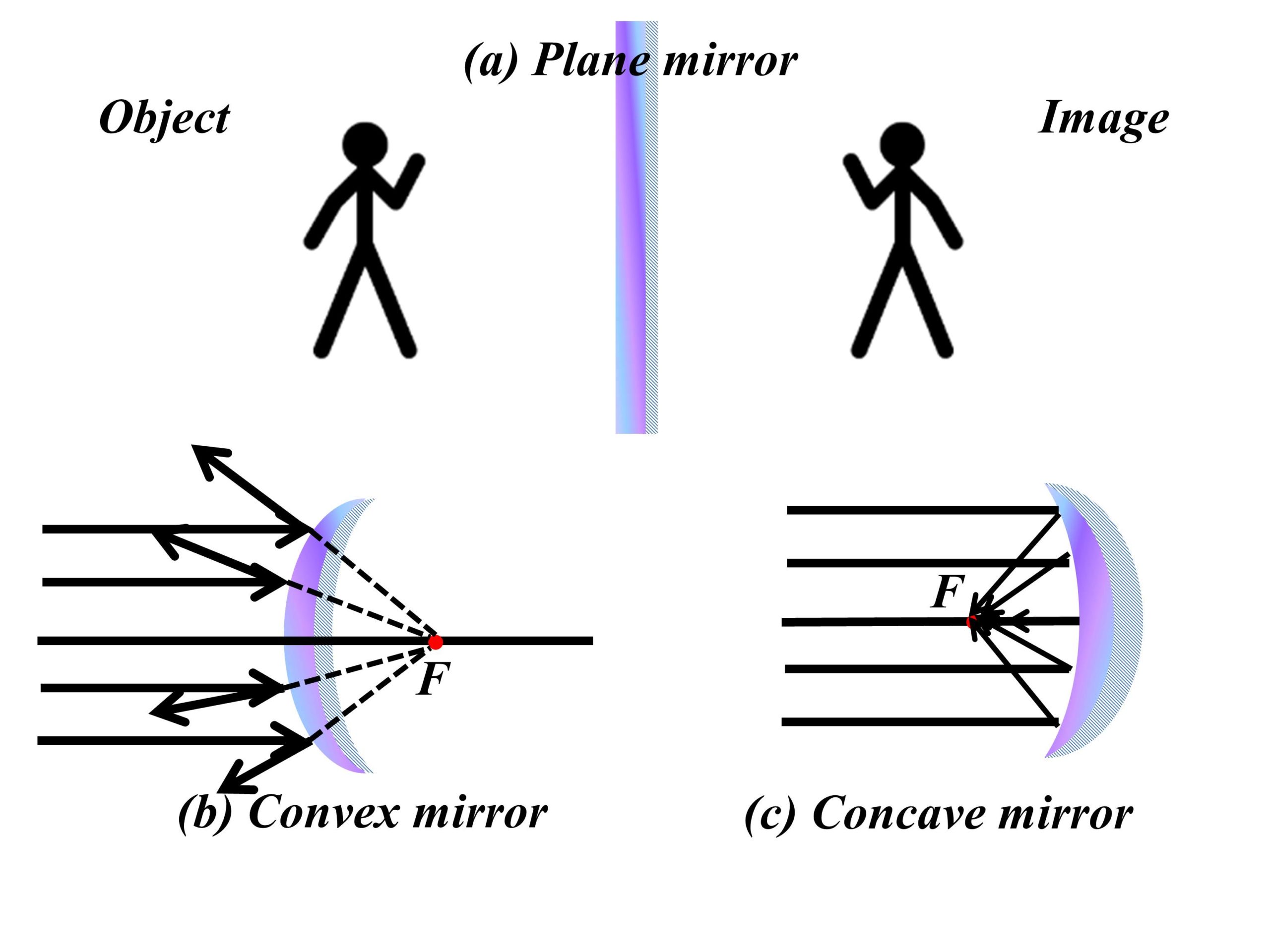
Describe Two Common Uses of a Diverging Mirror
Perhaps you noticed that there is a definite relationship between the image characteristics and the location where an object is placed in front of a concave mirror. The purpose of this portion of the lesson is to summarize these object-image relationships - to practice the L•O•S•T art of image description.

Q 2 Draw a ray diagram showing the diverging action of (i) a convex
A convex mirror diverges light, as does a concave lens. Any lens that is thicker in the center than the ends is a convex lens. Any lens thicker at the ends than in the center is a concave lens. Similarities between lenses and mirrors. The equations we used for mirrors all work for lenses. A convex lens acts a lot like a concave mirror.

Why is a concave mirror called a converging mirror ? Explain with
Check Your Understanding. The following questions pertain to the image characteristics of all types of optical devices discussed in the last two units - plane mirrors, concave mirrors, convex mirrors, converging lenses, and diverging lenses.Use your understanding of the object-image relationships for these three types of mirrors and two types of lenses to answer these questions.
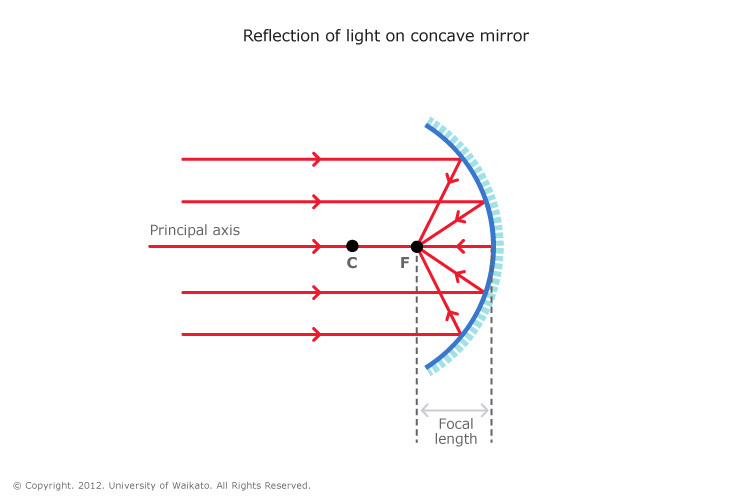
Concave mirror — Science Learning Hub
Spherical mirrors may be concave (converging) or convex (diverging). The focal length of a spherical mirror is one-half of its radius of curvature: \(f = \frac{R}{2}\).. If the inside surface is the reflecting surface, it is called a concave mirror. Symmetry is one of the major hallmarks of many optical devices, including mirrors and lenses.
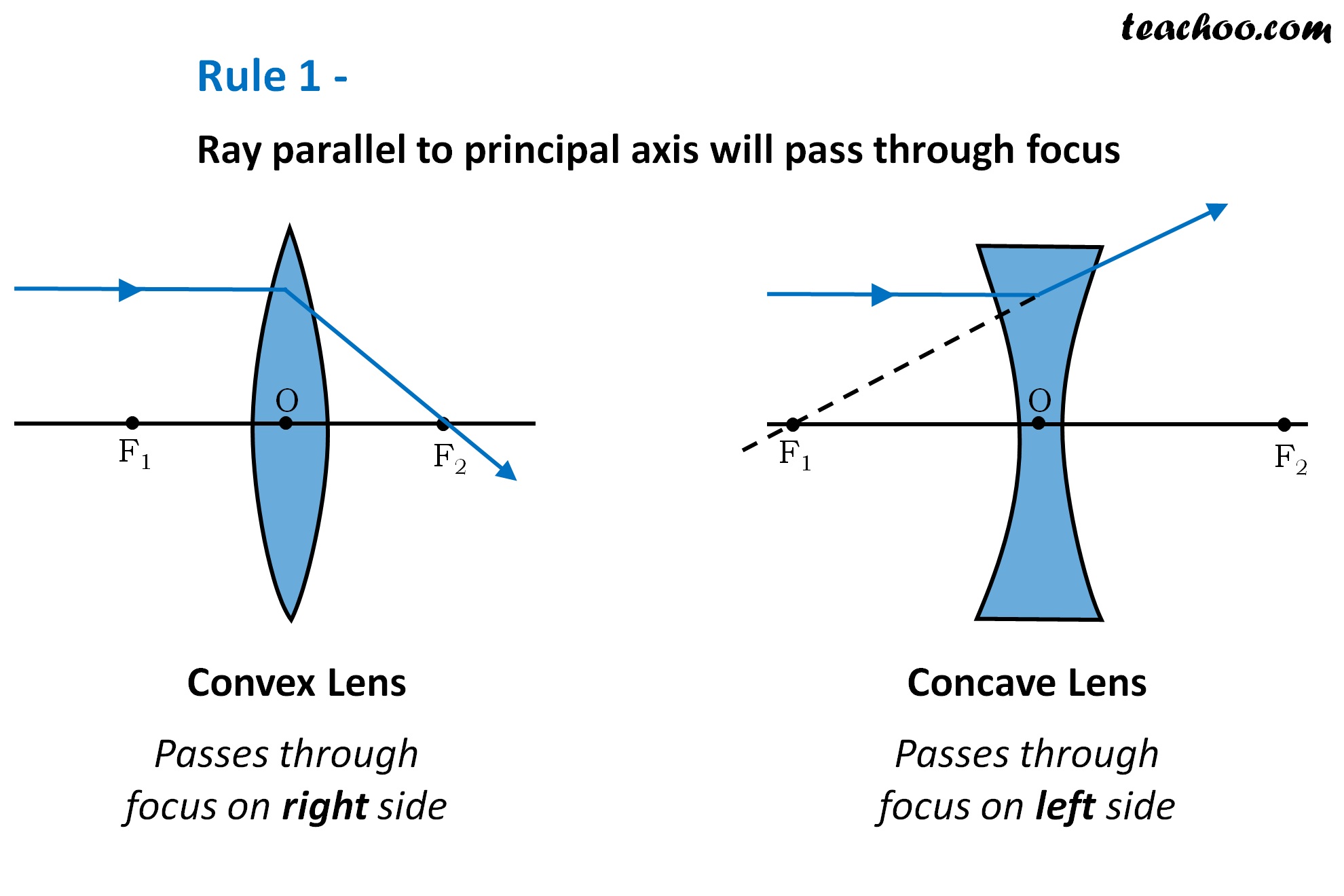
Rules for drawing Ray Diagram in Convex and Concave Lens Teachoo
A ray approaching a concave converging mirror parallel to its axis is reflected through the focal point F of the mirror on the same side. (See rays 1 and 3 in Figure \(\PageIndex{2}\)) A ray approaching a convex diverging mirror parallel to its axis is reflected so that it seems to come from the focal point F behind the mirror.

Basic Knowledge of Converging and Diverging Lenses Definition
Physics Optics Concave Convex Mirrors Concave Mirrors and Convex Mirrors A mirror is a surface that reflects almost all incident light. Mirrors come in two types: those with a flat surface, known as plane mirrors, and those with a curved surface, called spherical mirrors.

Convex And Concave Mirrors And Lenses
The method is applied to the task of drawing a ray diagram for an object located beyond the center of curvature (C) of a concave mirror. Yet the same method works for drawing a ray diagram for any object location. 1. Pick a point on the top of the object and draw two incident rays traveling towards the mirror.